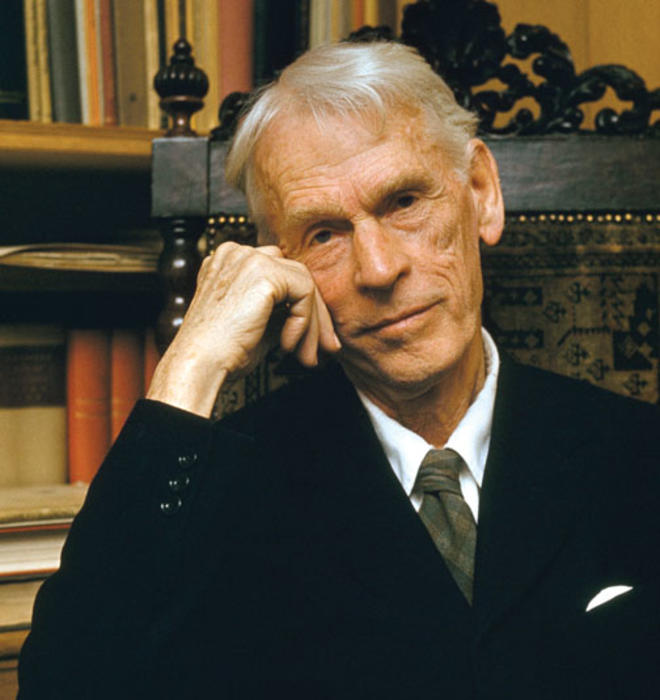
This is a corrected version of an article published in the April 4, 2012, issue. The correction appears at the end of the story.
This is adapted from a longer essay on the history of computing at Princeton, available here.
Princeton’s computing story begins not with Alan Turing *38, Alonzo Church ’24 *27, John von Neumann, or Albert Einstein, but with Oswald Veblen, who came to the campus at the request of University president Woodrow Wilson 1879 to teach mathematics.
His uncle Thorstein, who wrote The Theory of the Leisure Class (1899), is better known, but Oswald arguably had a more lasting impact. During World War II, Einstein urged President Franklin D. Roosevelt to build an atomic bomb. Years earlier, Princeton’s Veblen had pressed Roosevelt to help him bring mathematics and physics faculty out of Europe before the war, undoubtedly delaying the development of Hitler’s bomb. On campus, he is fondly remembered for helping to move the University toward a focus not just on teaching, but on primary research.
But Veblen’s most important contribution to computing stemmed from his work on ballistics. In the wake of World War I and the increased mobility of military equipment, much more accurate and timely methods for firing were needed. Veblen undertook the creation of trajectory tables that would take into consideration variables such as altitude, wind, temperature, shell materials, azimuths, and the like to achieve specific firing distances. Each table of 3,000 entries required many multiplications, by hand, taking an average of 12 hours of error-prone work. Traveling back and forth between Princeton and the Aberdeen Proving Ground in Maryland, Veblen often thought about how to speed up the work and make the calculation process more efficient.
In 1930, Veblen invited perhaps the world’s greatest mathematician, 27-year-old John von Neumann, to Princeton as a lecturer in quantum statistics. Von Neumann became a full professor just a year later. He had received his doctorate in mathematics at age 22 from the University of Budapest and already had published five papers. Three set out a mathematical framework for quantum theory, a fourth was a pioneering effort in game theory, and the fifth explored the link between formal logic systems and the limits of mathematics.
“One of von Neumann’s most remarkable capabilities was his power of instant recall,” wrote Herman H. Goldstine in his 1972 book, The Computer from Pascal to von Neumann (Princeton University Press). “As far as I could tell, he was able on once reading a book or article to quote it back verbatim; moreover, he could do it years later without hesitation. ... On one occasion, I tested his ability by asking him to tell me how A Tale of Two Cities started, whereupon, without any pause, he immediately began to recite the first chapter. We asked him to stop after 10 to 15 minutes.”
Jon Edwards ’75, a former administrator in Princeton’s Office of Information Technology, is co-coordinator of Princeton’s Turing Centennial Celebration.
For the record
Thorstein Veblen was the uncle of Oswald Veblen, who taught mathematics at Princeton. The relationship of the two was incorrect in a story in the April 4 issue.






No responses yet